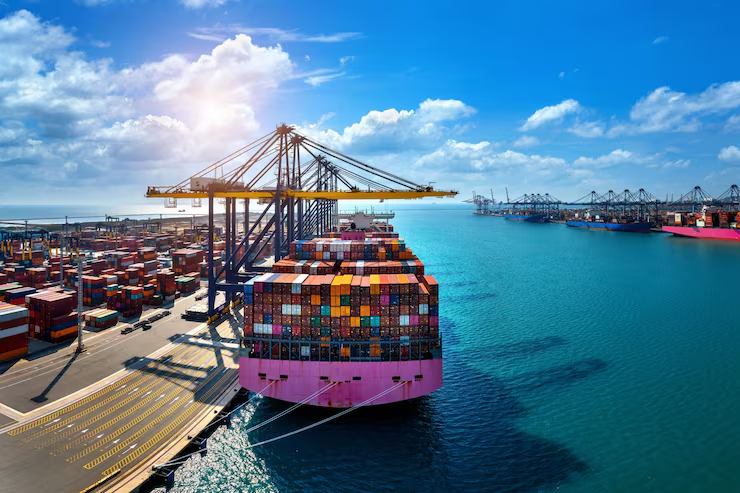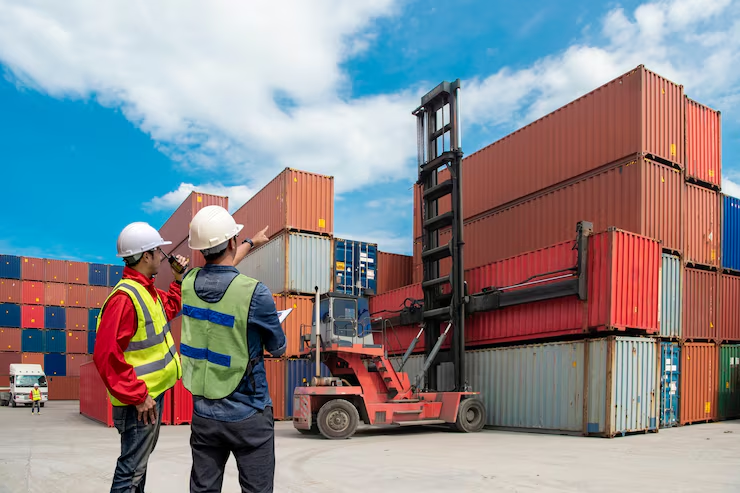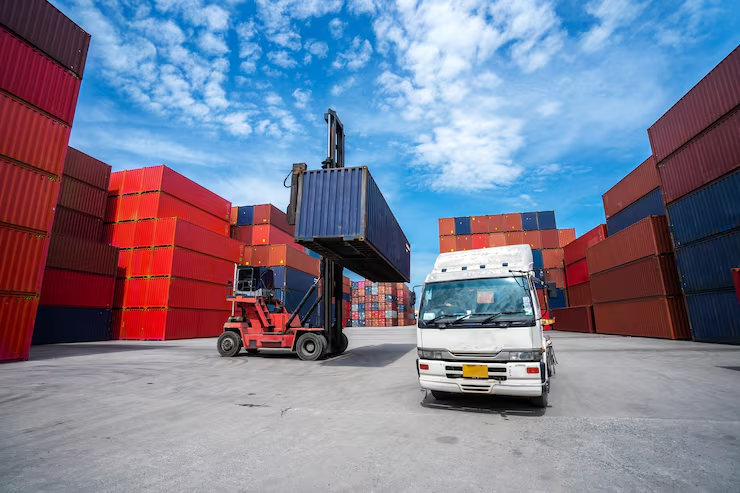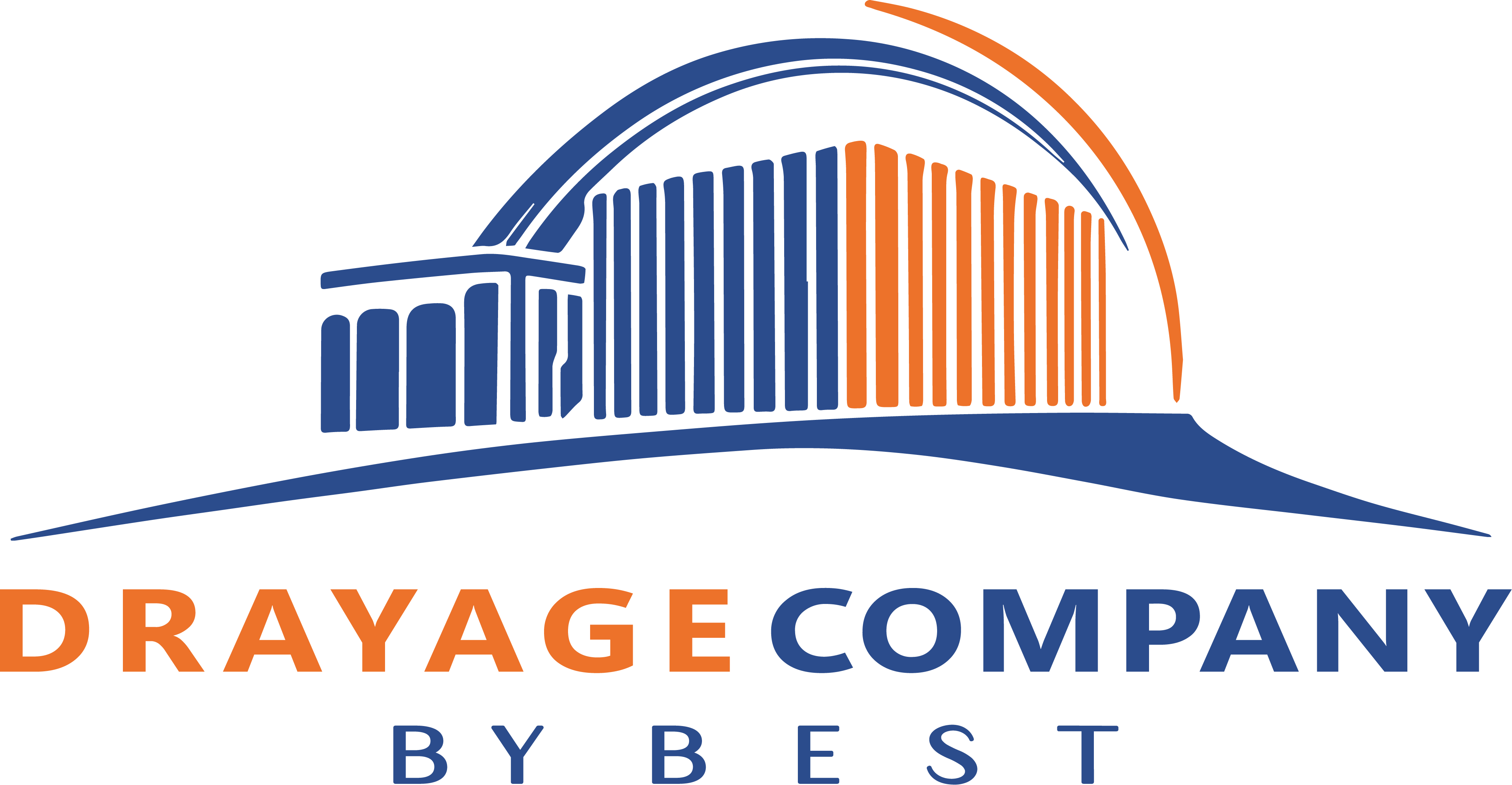Table of Contents
Key Takeaways✔ Local drayage companies handle short-distance container transport by coordinating with port terminals, managing equipment, and ensuring compliance with local regulations. ✔ They typically offer services like port pickups, container tracking, equipment management, regulatory compliance, and secure storage solutions. ✔ Choosing a reliable drayage provider involves evaluating their port experience, communication tools, compliance standards, equipment readiness, and customer reviews. ✔ Local drayage companies usually serve areas within 50 to 100 miles of major ports, including nearby warehouses, rail yards, industrial zones, and container storage facilities. |
Local drayage companies handle the critical task of transporting containers over short distances, typically between major ports and nearby logistics hubs. Their work involves navigating port systems, coordinating appointments, and ensuring containers reach their next stop without delays. These providers play a behind-the-scenes role in keeping freight flowing smoothly between ocean carriers and inland destinations. For businesses relying on tight delivery schedules, a reliable local drayage provider can make all the difference in daily operations.
Here are the main ways local drayage companies operate near major ports.
How Do Local Drayage Companies Operate Near Major Ports?
Local drayage companies are essential to short-haul container movement between seaports and nearby destinations like warehouses, rail yards, and distribution centers. They manage strict port schedules, handle complex logistics, and ensure containers are moved legally, safely, and efficiently. Here’s a deeper look at how local drayage companies operate near major ports and manage their day-to-day functions.
Port Pickup & Delivery Coordination
To move containers efficiently, drayage companies must work in sync with port operations, which often change by the hour.
- Schedule Port Appointments: Most major ports require drayage companies to book pickup and drop-off windows through digital appointment systems. This helps reduce congestion and ensures smoother operations at the port terminal.
- Monitor Container Status: Operators regularly check container availability using port systems and shipping line notifications to know when containers are cleared and ready for pickup.
- Coordinate With Destinations: Drayage teams must align delivery windows with warehouse receiving hours or rail yard schedules to prevent costly delays or missed appointments. This is especially important when looking at how local drayage companies operate near major ports, where space and time are limited and tightly managed.
Container Management & Tracking
Efficient container tracking ensures timely delivery and protects against unexpected charges, while keeping shippers informed.
- Use Chassis for Transport: Containers are transported on chassis, and drayage companies must ensure the correct equipment is available and safe for use. Many must also work within shared chassis pool systems managed at the port.
- Track Movement in Real Time: Using GPS and fleet software, drayage operators provide accurate location updates, helping customers follow their shipments from port to final stop.
- Avoid Extra Charges: By monitoring free time limits, drayage companies can avoid detention fees at customer sites and demurrage penalties at the port, saving time and money.
- Manage Yard Storage: When delivery locations aren’t ready to receive, containers are temporarily stored in secured yards, where they’re tracked and managed to prevent misplacement or extended dwell times.
Compliance With Port & Transport Regulations
Drayage providers must meet various local and federal regulations to stay in operation and maintain access to ports.
- Follow Port Authority Rules: This includes complying with gate entry protocols, container movement rules, and designated traffic patterns, especially in ports with strict security or environmental guidelines.
- Meet DOT and FMCSA Standards: Drayage companies must operate trucks that meet federal safety standards, including routine inspections, driver logs, and vehicle registration.
- Handle Customs and TSA Protocols: Containers moving through U.S. ports must pass customs clearance and often require drayage operators to follow TSA rules for bonded or secured cargo.
- Use Emission-Compliant Trucks: Beyond New York City, areas like Southern California, drayage fleets must comply with clean air regulations under programs like the Clean Truck Program, which restrict older diesel engines. This reflects how local drayage companies operate near major ports with environmental priorities.
Chassis and Equipment Maintenance
Drayage companies must keep trucks and equipment reliable to ensure cargo keeps moving and avoids operational slowdowns.
- Perform Regular Maintenance: Routine checks and repairs on both chassis and trucks are done to meet safety standards and reduce breakdowns during container transport.
- Navigate Equipment Programs: Many ports use shared chassis pools or gray pool systems, and companies must track what’s available and follow return policies set by leasing providers.
- Replace Damaged Units Quickly: Drayage operators need backup equipment ready in case of a failure, especially when timing is critical. This ensures they stay on schedule even when unexpected issues come up.
Communication With Clients & Freight Forwarders
Clear, real-time communication is key to resolving issues and keeping the supply chain flowing.
- Provide Shipment Updates: Drayage companies use email, phone, and customer portals to keep freight forwarders and clients informed about delivery status, appointment changes, or delays.
- Resolve Operational Issues: When containers are placed on hold, misrouted, or missed during appointments, the drayage team works quickly to find a solution, often coordinating with multiple parties.
- Act as Liaison Between Parties: They serve as the connection point between shipping lines, 3PLs, terminals, and end customers, ensuring that instructions are clear and container movement remains on track. This hands-on coordination is a core part of how local drayage companies operate near major ports.

What Services Should You Expect From Local Drayage Companies?
When working with a local drayage provider, it’s important to know what services you should expect from local drayage companies to keep your cargo moving efficiently and on time. These companies handle the critical short-distance transport of containers between ports and nearby facilities.
Port Drayage Services
Port drayage services involve the short-distance transportation of containers from major seaports to local warehouses or distribution centers. This is a critical link in the supply chain, especially in high-traffic areas like Newark, New York, and Connecticut, where delays can easily occur without experienced handling. Local drayage providers manage everything from port appointments to timely pickups, leveraging deep knowledge of port operations to ensure freight moves efficiently through congested corridors.
Container Drayage Solutions
Container drayage ensures the continuous flow of cargo between ports, terminals, and nearby logistics hubs. These services are designed to accommodate containers of all sizes, including 20-foot and 40-foot units. Businesses rely on this type of drayage to maintain schedule integrity and avoid demurrage fees. Understanding what services you should expect from local drayage companies means looking for partners who can coordinate smoothly between multiple touchpoints, ensuring minimal disruption to the supply chain.
Intermodal Drayage Services
Intermodal drayage services link various modes of transportation—such as rail, truck, and sea—into one cohesive system. These services are vital for long-haul shipments that require short-distance connections between modal transfer points. Local drayage companies play a vital role in bridging these gaps, especially in regions with extensive rail infrastructure. They ensure that containers transfer quickly and safely without bottlenecks, keeping the larger intermodal strategy running on schedule.
Drayage Brokerage Services
Drayage brokerage connects shippers with verified, reliable carriers that match their freight needs. These services are ideal for businesses that don’t have time to vet and manage carriers themselves. A good broker offers access to a wide network of drayage providers, helping clients secure equipment, navigate port regulations, and manage last-minute changes. Part of what services you should expect from local drayage companies includes access to brokerage support that offers both flexibility and peace of mind.
Specialized 3PL Drayage Solutions
Third-party logistics (3PL) drayage solutions are designed for businesses seeking a fully managed experience. These providers handle everything from route planning and scheduling to real-time tracking and delivery confirmation. With a 3PL partner, businesses can offload the operational complexity of drayage and focus on core functions. Scalability, visibility, and coordination across multiple carriers are key benefits—and knowing what services you should expect from local drayage companies ensures you’re choosing a 3PL that aligns with your goals.
Drayage Trucking Service
Drayage trucking handles the essential short-haul movements of freight between port terminals and nearby warehouses or distribution facilities. This service ensures fast turnaround of containers and helps avoid storage penalties at the port. With access to the right equipment and experienced drivers, drayage trucking companies support a wide variety of industries with time-sensitive demands. These trucking services form the backbone of efficient container logistics and are indispensable in keeping shipments on schedule.
How to Choose the Most Reliable Local Drayage Companies?
Selecting a dependable drayage provider is a critical part of keeping your supply chain running smoothly, especially when containers need to move quickly from ports to local destinations. A well-chosen drayage partner brings both experience and efficiency to your operations.
Here are the key factors to consider:
1. Proven Track Record and Port Experience
Choose providers with proven experience operating at the specific port, as familiarity with terminal procedures, appointment systems, and traffic patterns leads to smoother execution. Since drayage can make up 25% to 40% of total container transport costs and impact fuel use and emissions, experienced companies are better equipped to minimize delays, reduce unnecessary miles, and operate more efficiently within port limits.
2. Real-Time Tracking and Communication
The best drayage companies offer digital tools for tracking containers and communicating with customers. Whether through GPS, dispatch portals, or EDI integrations, they keep shippers informed of container status from pickup to delivery. Timely updates, along with the ability to reach customer service quickly, show that the company is committed to visibility and support.
3. Strong Compliance and Licensing
Any drayage company should meet all regulatory requirements. That includes Department of Transportation standards, FMCSA safety regulations, and any port-specific rules like clean truck programs. Always verify that the company holds proper licenses, insurance coverage, and meets local emissions requirements. Regulatory compliance is essential when evaluating how to choose the most reliable local drayage companies.
4. Equipment Availability and Maintenance
Reliable drayage companies have access to well-maintained chassis and trucks, and can quickly replace damaged equipment. They should also be comfortable working within chassis pool systems or with third-party leasing companies. This ensures they’re not delayed by equipment shortages and can move containers as scheduled.
5. Positive Reviews and References
Feedback from other shippers or freight forwarders can offer insight into the company’s reliability. Look for reviews that mention consistent service, fast response times, and professionalism. References from others in your industry can also help confirm whether the provider has a strong reputation.
6. Capacity and Flexibility
Drayage providers should have the ability to handle your container volume—even during peak seasons. They should also be flexible enough to adjust to changes, like new delivery times, last-minute pickups, or shifted schedules due to vessel delays. Their ability to adapt shows long-term value and helps understand how do local drayage companies operate near major ports.

What Areas Do Local Drayage Companies Typically Serve?
Drayage companies are focused on short-distance freight transport, but their reach is essential in connecting major ports to the broader logistics network. Knowing what areas do local drayage companies typically serve helps shippers plan their supply chain more efficiently and ensure their containers move without delays. These service areas are often determined by proximity to major seaports, availability of infrastructure, and customer demand.
Port-Adjacent Cities and Industrial Zones
Most drayage companies operate within a 50 to 100-mile radius of major ports, focusing on industrial hubs and freight zones that house warehouses, container yards, and cross-docking facilities. These areas are designed to receive high container volume and are often located near freeways for easy access.
Inland Rail Yards and Intermodal Terminals
In addition to port-adjacent deliveries, many local drayage companies serve intermodal facilities where containers are transferred between trucks and trains. These rail yards may be located further inland but still fall within a region considered local due to the short-haul nature of the move. Drayage companies often move containers from the port directly to these intermodal terminals to support long-distance rail shipping.
Regional Warehouses and Distribution Centers
Large regional distribution centers are common destinations for drayage carriers. These facilities may be located near city limits or in designated logistics parks. Since they handle bulk cargo for retailers and manufacturers, they rely on local drayage to handle containerized shipments efficiently and within delivery windows.
Container Yards and Storage Facilities
Many drayage companies also support container storage yards and third-party logistics yards, often located near ports or in secondary freight zones. These areas serve as overflow locations or staging points when immediate delivery isn’t possible. Drayage providers move containers in and out of these sites as part of their regular service footprint.
Airport Cargo Terminals (in Some Markets)
In certain metro areas, especially where air and sea freight intersect, local drayage companies may also serve cargo terminals at airports. These moves are typically less common but still fall within their service area, especially when handling bonded or expedited international cargo. While this isn’t standard for all providers, it still shows how do local drayage companies operate near major ports based on customer needs and logistics strategy.
Frequently Asked Questions (FAQs)
What does local drayage mean?
Local drayage refers to the short-distance transport of shipping containers between ports, rail yards, warehouses, or distribution centers within the same region. It typically involves moving cargo within a 50 to 100-mile radius of the port. Drayage is a key part of the intermodal shipping process. These moves are usually completed within the same day.
Is there a difference between drayage and container shipments?
Yes, there is a difference. Drayage is the local transportation of a container, while container shipments refer to the full journey of a container, including ocean freight, rail, or long-haul trucking. Drayage is just one leg of the container’s movement. It connects the container from the port to its next destination.
Is drayage the same as trucking?
Not exactly. Drayage is a specific type of trucking focused on short-distance container transport, usually around ports or rail terminals. Regular trucking can cover long-haul distances and may not involve containers. Drayage uses specialized equipment, like chassis, to carry containers.
What is a drayage charge in shipping?
A drayage charge is the fee for moving a container a short distance, typically from a port to a nearby facility. This fee covers labor, fuel, equipment use, and port access. It is billed separately from ocean freight or long-haul trucking. Drayage charges can vary based on distance, container type, and timing.
What is a drayage within a port limit?
Drayage within a port limit means moving a container from one terminal to another within the same port area. These are often referred to as intra-port or pier drays. They are short moves that help reposition containers for customs clearance or loading onto different vessels. This service helps improve cargo flow within the port.

Get Reliable Container Moves Handled in New York City!
Count on Drayage Company by Best for dependable and on-time container transport services across New York City. From terminal pickups to warehouse deliveries, every move is managed with precision, regulatory compliance, and real-time updates. Whether it’s drayage within port limits or short-haul delivery to rail yards, our experienced team serves the core logistics needs of businesses operating in and around New York City.
Contact Drayage Company by Best today to schedule trusted drayage services in New York City!

